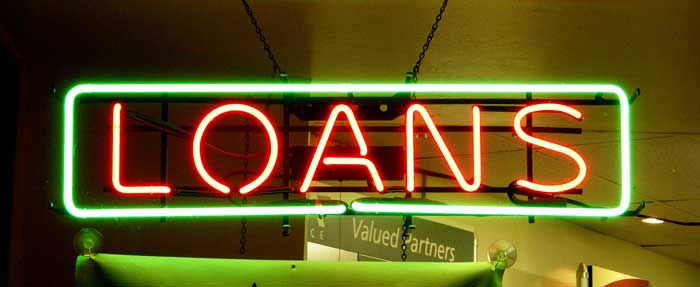Looking for a loan for your potential real estate investment? You might think you’ll be able to negotiate a great rate with your bank – or shop your business around to get an amazing deal. Before you approach a lender with plans for serious negotiations, there are some key facts that you should know about mortgage rates. For instance:
The economy – not a particular lender – determines your interest rate. Say you’re buying an investment property and you go to your local bank – such as Bank of America – for a loan. You try to bargain with them, saying that you worked with them on your primary mortgage for your home, so you expect a good deal on this loan. However, the representative at your local bank branch actually has very little control over the rate for your loan. Instead, the rates are driven by the economy.
Many people don’t realize that the condition of the market is what sets the interest rates. In a bad economy, mortgage rates go down because people don’t want to invest in “traditional” stocks when the stock market isn’t doing well, so rates drop to be competitive with the stock market. A lower rate is, of course, more attractive to a buyer (the consumer who is borrowing money).
Then, as soon as the economy turns, confidence comes back and money loosens up a bit. When the economy is booming, mortgage rates go up to compete with the thriving stock market, which is better for the lender. A higher rate is also more attractive to the investor (such as the secondary mortgage market or a person who is investing on Wall Street on that mortgage-backed security – more on this in a moment.)
When you get a rate from your lender, the vast majority of the time, they sell the loan to a secondary mortgage market. Here’s how it works: You go into your local Bank of America branch and get approved for a loan at a certain percentage. Bank of America then sells the mortgage to the secondary mortgage market (e.g., Fannie Mae or similar institutional investors.) Fannie Mae likely hires Bank of America to service your loan, so you’ll still get your mortgage bills from Bank of America – not Fannie Mae.
Institutional investors sell those loans as mortgage backed securities. The secondary mortgage market (also known as an institutional lender, such as Fannie Mae) then sells those mortgages as mortgage-backed securities (bonds). Basically, the mortgage gets sold and becomes bonds in the market. So the mortgage that I have on my house can be tied into an investor’s 401K or into their portfolio of investments.
A bad economy can be good for real estate investors. People have a misconception that it’s a bad time to buy a house in a down economy, but the reverse is actually true. It goes against conventional wisdom – in a down economy, many people don’t want to buy a house. Actually, this is the perfect time to buy because the interest rates are so low. Conversely, a strong economy leads to higher rates, which are more attractive to lenders, as well as investors in the bond/stock markets, and less beneficial for the real estate investor.
Lenders take double the risk, so demonstrate your attractiveness as a candidate. A lender is taking a risk on two fronts. First, they’re taking a risk on you, as an individual, and your ability to pay back the loan. Secondly, they’re taking a risk on the economy. If they issue a loan at a 4% rate but inflation is at an all-time high, their payback is a lot less than what they lent out. As a potential investor, you can’t control the economy, but you can make yourself look like a more attractive candidate. It comes down to dignity + ability + stability. Have dignity to walk into a bank with confidence, explaining that you’ve had a long-term job, which proves your stability and makes you a strong candidate for a mortgage. The per the JOB + REAL ESTATE = WEALTH approach, show that you have a full-time job plus a second stream of income from your real estate investments, giving you the ability to stay the course even if something goes wrong (such as your property needing major repairs.) Demonstrate to the lender that you’re a lower-risk loan candidate and, therefore, more desirable.
Keep an eye on the 10 year T-bill. While the Treasury bill (aka the T-bill), inflation and the Federal Reserve don’t really determine interest rates, they do drive the economy, which in turn drives interest rates. So keep your eye on the T-bill as a pulse of the economy.
Know what (and when) to negotiate. Say rates are set across the board at 5%. Any lender you look at will offer rates right around 5%, which is based on the health of the economy. If you “shop around,” talking to three or four different lenders, they will all be around the same rate, with perhaps a .5% margin. Therefore, the leeway you have is only half of a percentage point. To negotiate the best deal – within this small margin – show your dignity, stability and ability, the characteristics that maximize your attractiveness to the lender. In this scenario, a strong candidate could potentially get a 4.5% rate.
If you need a loan, before you approach any lender, look first at how the economy is doing. Examine the secondary market and determine what they’re offering for mortgage rates. Then prove yourself to be an attractive candidate to secure the best rate possible, recognizing that lenders have very little room to negotiate.


Recent Comments